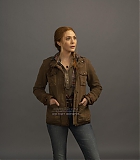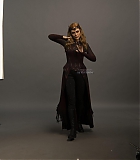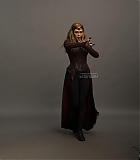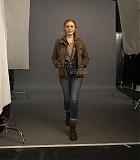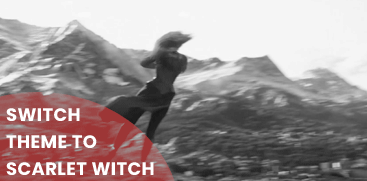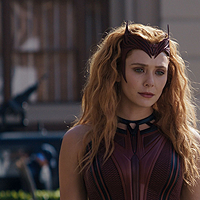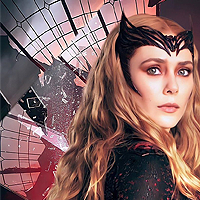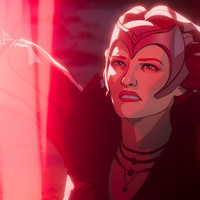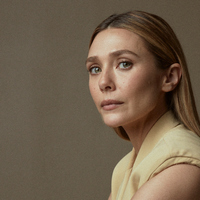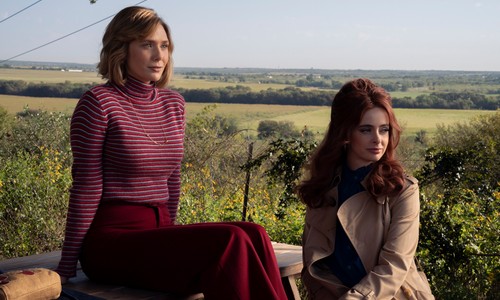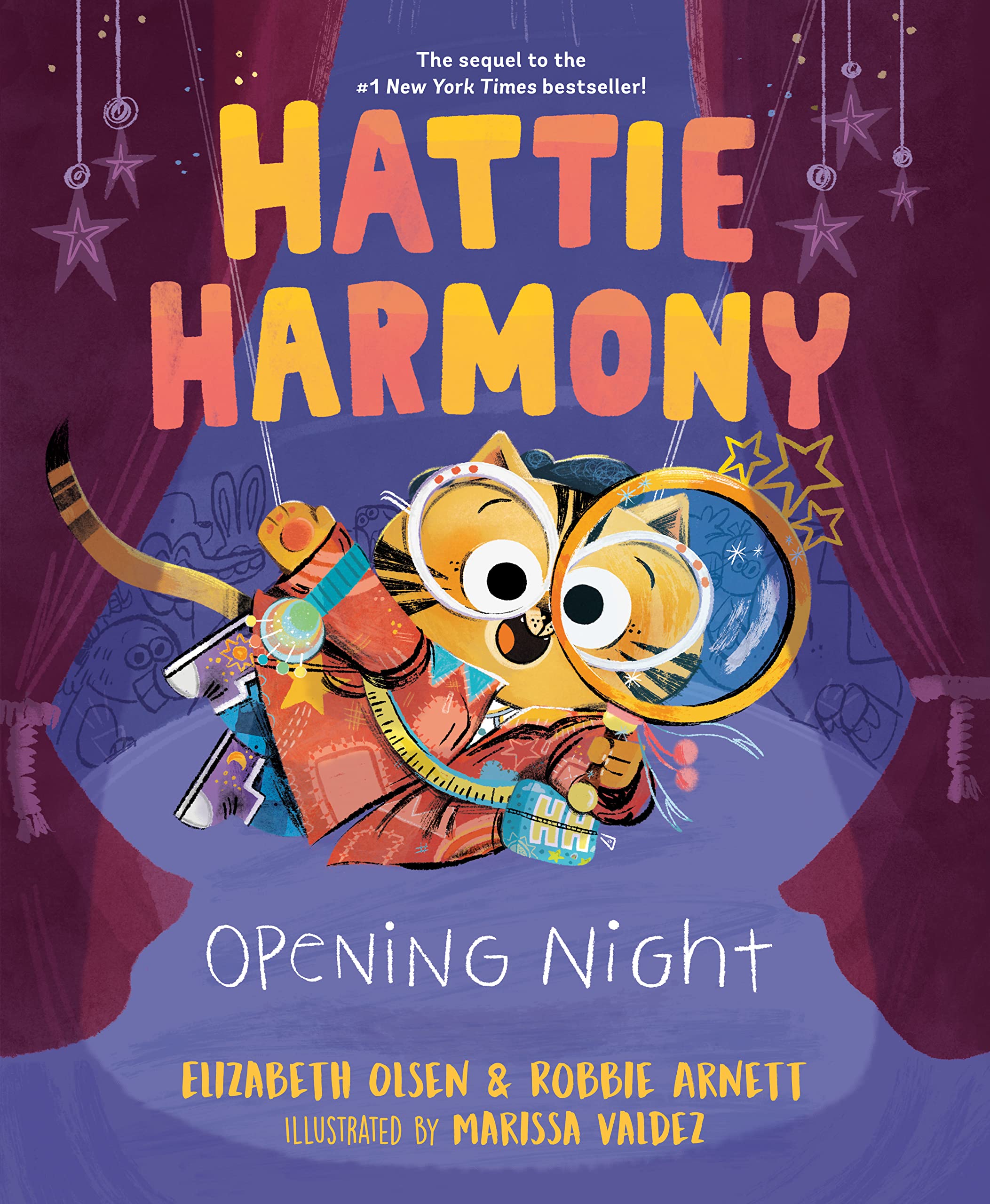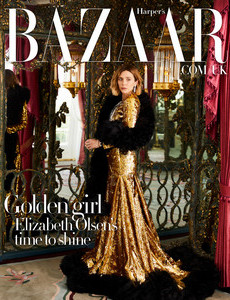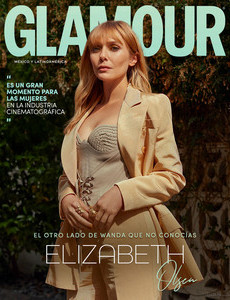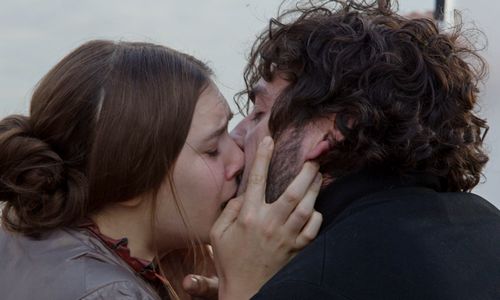An ambitious new Disney+ series might just give the strongest Avenger the happy ending she deserves.

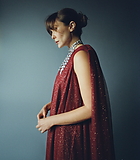
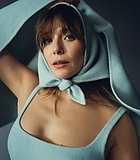


GALLERY LINKS
Studio Photoshoots > 2021 > Session 001
ELLE: We can’t keep meeting Elizabeth Olsen like this. By “this,” I mean in the throes of catastrophe or bereavement, or, to put it plainly, when she’s an emotional wreck. In the 2018 Facebook Watch drama Sorry For Your Loss, Olsen assumes the role of Leigh Shaw, a young widow grappling with the unexpected loss of her husband and all the painful nuisances that come with death: the unbearable waves of sadness, the clichéd condolences, a grief support group that runs out of donuts. At one point, Leigh says through a cracked voice, “I’m just mad all the time.” It’s hard not to draw parallels to Olsen’s other angry character. After all, “mad” is exactly how 2015’s Avengers: Age of Ultron introduced us to Wanda Maximoff.
Defined by tragedy since her Marvel debut, Wanda (aka the Scarlet Witch) is an orphan with telekinetic powers. When not saving the world, she spends most of her time onscreen grieving the deaths of her parents, twin brother, or lover. Wanda’s never been allowed to fully exist outside the confines of her grief and anger, but with the launch of WandaVision—Marvel’s foray into serialized content for streaming—she may just be getting the happy ending she deserves.
Partly inspired by The Vision comic book, which follows synthezoid superhero Vision and his family as they move to the suburbs of Washington, D.C., the Disney+ series is an ode to the TV sitcoms we’ve come to love, with Wanda and Vision (Paul Bettany) basking in newlywed bliss—except Vision’s been very dead (killed twice, in fact) since the events of 2018’s Avengers: Infinity War. It’s unclear exactly how these starcrossed characters got to suburbia, but for now, it’s a delight to see the typically solemn duo sink their teeth into slapstick comedy.
“The show is like a blank slate for them,” Olsen tells me over Zoom, her light brown fringe a departure from Wanda’s red waves. The Scarlet Witch’s doleful glare is also long gone; in its place, Olsen’s eyes are wide with excitement. “Wanda and Vision’s journey to this point is a story of pure, innocent love and deep connection with another person,” she explains. “It was also very traumatizing. Tragedy has always been their story. In our show, we kind of wipe that clean and start fresh.”
But Wanda’s complicated past looms over WandaVision. Age of Ultron saw her and her twin brother, Pietro, initially opposing the Avengers (the siblings volunteered for a series of experiments with Hydra—a super evil organization within the MCU—after the deaths of their parents at the hands of Tony Stark’s Stark Industries) before switching sides to help save the Earth. The movie ends in victory for our superheroes, but yet another tragedy for Wanda when Pietro dies in battle. She finds comfort in the arms of Vision, an android created from the remains of Tony’s J.A.R.V.I.S. program, but even that bliss is short-lived. You see, Vision can only live with the help of the Mind Stone, which Mad Titan Thanos needs to take over the universe. In Infinity War, Vision asks Wanda to sacrifice him, and Wanda reluctantly agrees—but Thanos reverses time to gain control of the stone, killing the robot for a second time. Wanda’s pain is palpable: Imagine sacrificing the love of your life to save everyone else, just to watch him brought back to life and killed again—by the very villain you’re trying to defeat.
Though the thrill of playing a character with superhuman abilities is enticing for any actress, Olsen says it was Wanda’s internal battle with mental health that attracted her to the role in the first place. “[Joss Whedon] explained to me that Wanda Maximoff has always been this pillar of the struggle of mental health, from her pain and depression and traumatic experiences to how she completely alters the reality of the comics,” Olsen says of her early conversations with the Age of Ultron director. “The thing I held onto after reading the initial script was that she was not only powerful because of her abilities, but because of her emotions.”
In fact, MCU theorists would argue she’s one of, if not the, strongest Avenger. She can infiltrate the others’ minds to reveal their biggest fears (Age of Ultron). She can overpower Vision and send him plunging through several floors to break up a fight between warring superheroes (Avengers: Civil War). She can even bring Thanos to his knees, snapping his sword in half and forcibly removing his armor piece by piece (Infinity War).
Still, “they keep slapping her over the head with more grief,” Olsen quips.
As phase one of the Marvel Cinematic Universe began with the sound of clanging metal on May 2, 2008, phase four kicked off on January 15, 2021 with a kitschy 1950s sitcom theme: “She’s a magical gal in a small town locale / he’s a hubby who’s part machine / How will this duo fit in and pull through? Oh, by sharing a love / like you’ve never seen.”
With WandaVision, Marvel steers clear of the typical superhero trappings: no destructive battles at a Berlin airport or across the streets of New York City; no blonde-haired god time-traveling to other realms; no tree-like alien fight alongside a raccoon. Wandavision takes place after the events of Endgame in a fictional suburban town called Westview, and the biggest problem the newlyweds face in the show’s opening moments is creating a convincing backstory to get nosy neighbor Agnes (Kathryn Hahn) off their backs.
“They are just trying to fit in,” Olsen explains. “They’re trying to not be found out by their neighbors that they’re super-powered beings.” Now, if only we can figure out what the hell is actually going on. Olsen remains tight-lipped: “The reason it’s a sitcom shows itself later in the show,” she hints. “When Kevin [Feige] told me, it didn’t feel so bizarre. It felt like a great way to start our story.”
“With our show, you don’t know what the villain is, or if there is one at all.”
So, is Wanda stuck in the first stage of grief, denial? Has she altered reality as a coping mechanism for Vision’s death? Is she being held hostage by a terrorist organization (ahem, Hydra!)? One thing we do know is that someone is watching the couple and taking notes. At the end of episode 1, the camera pans out from a retro TV playing an episode of WandaVision (meta!) to show a hand jotting down notes. There’s a strange sword symbol on the notebook and a nearby control board, and in episode 2, the same sign appears on a toy helicopter lodged in the couple’s front yard. Later, when a mysterious beekeeper crawls out of the sewer on the couple’s street, the symbol is seen on the back of his suit. In its 20-plus movies, Marvel villains have always existed in plain sight. But with a new, less obvious darkness lurking at every turn, Wanda may have to return to her world-saving roots.
“Someone said to me when you watch any of these hero movies, you know when the villain’s about to show themselves, and you also have an idea of who the villain is,” Olsen says. “With our show, you don’t know what the villain is, or if there is one at all.” For now, WandaVision allows for glimmers of hope and optimism for Wanda and Vision, despite what darkness tries to threaten their happiness. “Wanda is trying to protect everything in her bubble, protect what she and Vision have and this experience,” Olsen says. “I think everything she does is in response to keeping things together.”
In addition to exploding the concept of the superhero onscreen, WandaVision toys with a different era of TV in each episode. The pilot takes viewers to the ‘50s with an episode filmed in front of a live studio audience, and Wanda dresses up in the quintessential housewife garb, not a hair out of place in her voluminous bob. By the time we click on episode 2, she trades in her apron and kitten heels for a more pared-down ‘60s look, while episode 3 gives a nod to the ‘70s, complete with a Brady Bunch-style staircase and a shag haircut for Vision.
While dressing up was the fun part, time-hopping through the eras required a lot of binge-watching old sitcoms to get the mannerisms down right. Olsen studied series like The Dick Van Dyke Show, The Brady Bunch, The Mary Tyler Moore Show, and Bewitched to “understand the tones of each era” and get a grasp of how Wanda and Vision should act as a couple. (One of her favorite TV pairings was Jane Kaczmarek and Bryan Cranston from Malcolm in the Middle.) She was fascinated by the way female characters evolved through the decades: “You have to learn appropriate manners—what’s considered being polite or proper. That coincides with women’s voices changing,” she explains. “I enjoyed challenging myself to match the syntax and the lyricism. I live in a very chest-register kind of deep voice. I had to remember not to bring it up at certain moments.”
For so long, Wanda served as a supporting character to Marvel’s biggest names, and the formulaic mundanity of the major theatrical releases made it easy to get comfortable. WandaVision offered Olsen a much-needed challenge. “I’ve only been working for 10 years, but there is this feeling where you start to get comfortable,” she says. “WandaVision was the furthest thing from comfortable for me. It felt intimidating. The character is a completely different thing.”
And fans hoping for a little Marvel action won’t be disappointed. “We still live up to what Marvel does,” she promises. “We just tell the story in a completely different way. It’s a very emotional, female story and it’s a story they haven’t told yet for either of our characters.” Whatever your theory is, keep the cliché condolences to yourself. No one will be uttering, “Sorry for your loss” in Wanda’s world.
